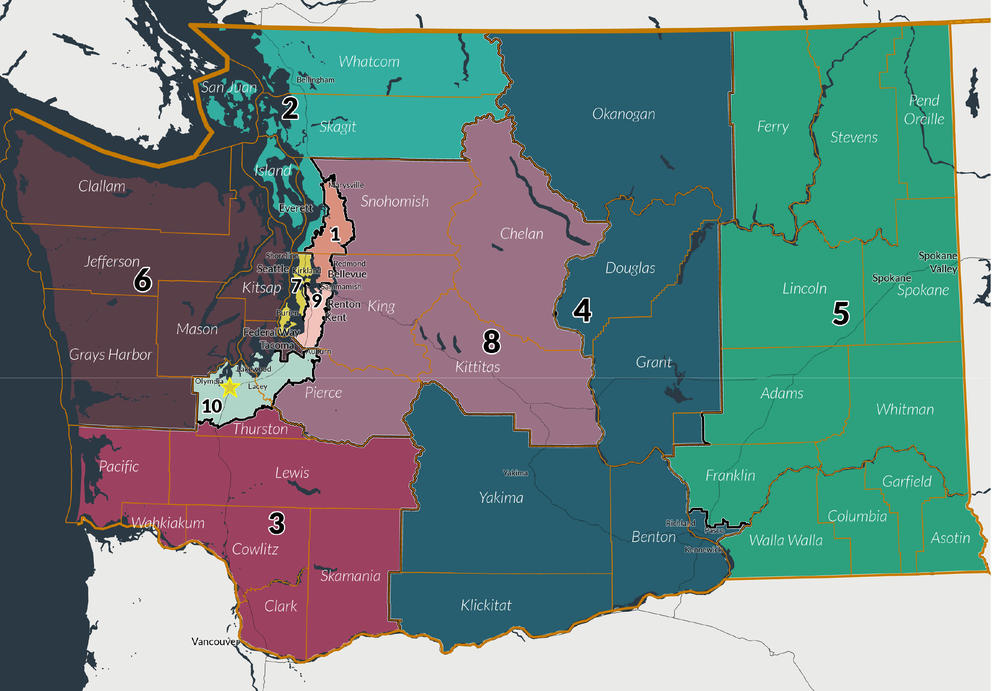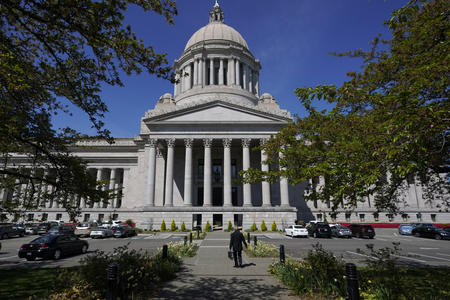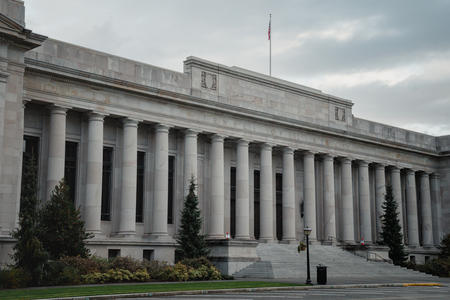Keeping in mind that none of this may end up in the court’s final redistricting plan, here are some of the highlights of the commission’s last-minute deal-making.
But, first, a behind-the-scenes note. Some people may be wondering: How did the commissioners determine what is a Republican- or Democratic-leaning district? After much debate, they based their assumption on the results of the 2020 treasurer’s race.
That decision was one of several the commissioners made at the very end of their process, outside of public view.
Here are some of the others.
Swing districts: In the final moments before the commission’s midnight deadline on Nov. 15, the four commissioners were privately debating the fate of three legislative swing districts: the 44th Legislative District in Snohomish County, the 28th Legislative District in Pierce County and the 47th Legislative District in south King County.
The deal they reached was that the 44th and the 28th districts would get slightly better for Democrats, while the 47th would stay about the same in terms of partisan performance. Additionally, all the other legislative swing districts in the state were to remain as they are, without a substantive shift that would make them better for one party or the other. But there’s a wrinkle when it comes to the 42nd Legislative District in Whatcom County. Read on to learn more.
Honoring tribal requests: In Whatcom County, the commissioners were also working to honor the Nooksack tribe’s request that its lands be placed entirely in the 42nd Legislative District, as opposed to being split across multiple districts. The Nooksack also asked that its lands be placed in the same district as those of the Lummi tribe, said two members of the redistricting commission, April Sims and Paul Graves.
The commissioners went back and forth trying to find a way to respect the Nooksack’s request without substantially altering the partisan makeup of the 42nd District, a swing district where neither party wanted to lose ground.
The final map proposed by the commission would accommodate the Nooksack’s request. But in doing so, it would also make the competitive swing district about 0.1% better for Democrats.
That may not sound like a lot. But in 2018, the district’s current state senator, Republican Doug Ericksen, won reelection by a slimmer margin — just 46 votes out of more than 72,000 ballots cast.
“It’s very small, but it could matter in that district,” said Graves, one of the GOP members of the Redistricting Commission.
Yakima Valley compromise: A major source of disagreement was over creating a legislative district in the Yakima Valley that would comply with the federal Voting Rights Act. The commissioners ultimately settled on creating a district that is majority Latino by citizen voting age population, something Democrats had pushed for. But in a nod to GOP interests, the proposed district would lean slightly Republican.
While an analysis from the UCLA Voting Rights Project questions whether such a district would pass legal muster, Graves criticized that analysis on Twitter and insisted the proposed district complies with the law.
Certain majority-minority districts: Sims, one of the two Democratic appointees to the commission, said she wanted to redraw the 47th, 44th and 28th legislative districts so that the majority of the voting age population there would be people of color. But that was something she had to let go of, she said, as negotiations over those hotly contested swing districts went down to the wire,.
Right now, those districts have sizable minority populations, but remain majority white by voting age population.
Still, Graves, the GOP commissioner, noted that the number of districts that are majority people of color would increase under the commission’s proposed maps. Right now, four of the state’s 49 legislative districts have voting-age populations that are mostly people of color, Graves said. Under the commission’s proposed map, that number would increase to seven, he said.
Messing with Aberdeen: The proposed legislative map from the Redistricting Commission ends up somewhat awkwardly splitting the coastal city of Aberdeen. The commissioners made this split for two reasons. One was to avoid making the 24th Legislative District more Democratic, since, as part of another deal, they had agreed to keep most districts unchanged in terms of their partisan leaning.
The decision to split Aberdeen was also influenced by wanting to keep state Rep. Jim Walsh, R-Aberdeen, in his current district, said Graves, one of the GOP commissioners. Graves said that while protecting incumbents wasn’t a primary consideration for the commission, it sometimes came into play at the very end of the process, when the commissioners fine-tuned the edges of certain districts.
“You don’t want to draw someone out of their district if you don’t have to,” said Sims, one of the Democratic commissioners.
All told, seven out of 147 sitting legislators would be drawn out of their districts under the commission’s proposal. But three of those lawmakers are already planning to resign or retire, meaning only four incumbents would actually be displaced if the commission’s plan is adopted. Those incumbents would be: Sen. Bob Hasegawa, D-Seattle; Rep. Shelley Kloba, D-Kirkland; Rep. Jeremie Dufault, R-Selah, and Rep. Vicki Kraft, R-Vancouver.
Congressional districts: The commissioners’ agreed-upon proposal would have the 8th Congressional District remain a swing district. That district is currently represented by Democratic Rep. Kim Schrier.
The state’s nine other congressional districts, meanwhile, would remain mostly as they are, with little potential for any of them to flip from one party to another.
Under the commission’s proposal, no current members of Congress would be drawn out of their districts.
Joe Fain, one of the Republican-appointed commissioners, said one notable change under the commission’s proposed map would be that the 1st Congressional District would no longer stretch up to the Canadian border. Instead, the commission’s proposed map would draw a smaller, more compact 1st Congressional District that runs from Medina and Bellevue in the south to Arlington in the North. Fain said that configuration makes more sense, since it would no longer group rural areas of the North Cascades with Kirkland, Bothell and other suburbs that make up the tech corridor through King and Snohomish counties.
Under this arrangement, the 1st Congressional District, which is now represented by Democratic Rep. Suzan DelBene, would get safer for Democrats. The 10th Congressional District, which spans Pierce and Thurston counties, also would get slightly better for Democrats under the commission’s proposed map, while the 3rd Congressional District in southwest Washington would remain roughly as it is now in terms of partisanship, favoring the GOP, Fain said. Right now, Rep. Marilyn Strickland, a Democrat, represents the 10th District, while Rep. Jaime Herrera Beutler, a Republican, represents the 3rd.
Other congressional districts would have some change in boundaries under the commission’s proposed map, but for the most part they wouldn't be as dramatic. The 9th Congressional District, for instance, would still run north-south from Bellevue to south King County, but would stop at the King County border instead of continuing into Pierce County. The commission’s proposed 9th District would also include less of Bellevue and less of Seattle, while picking up new parts of Auburn and Kent. The 9th District is currently represented by Democratic Rep. Adam Smith.






